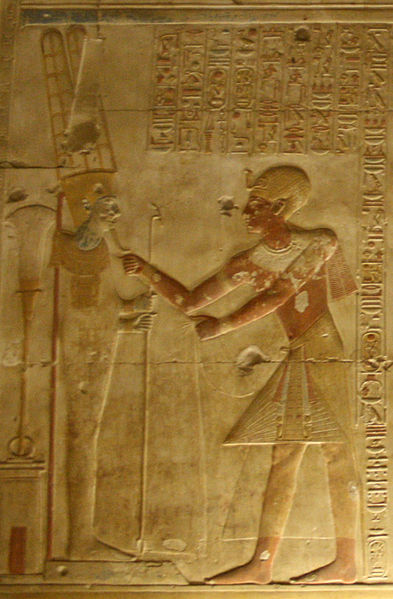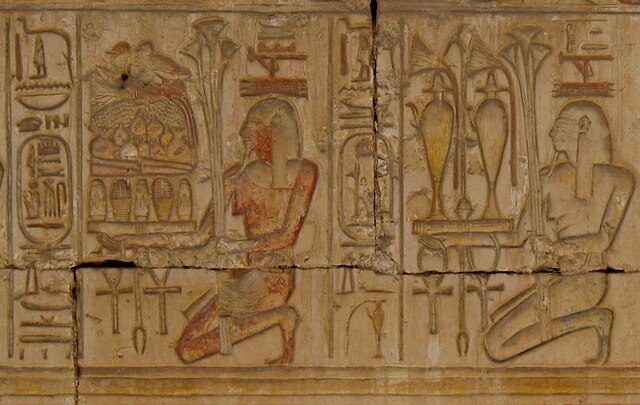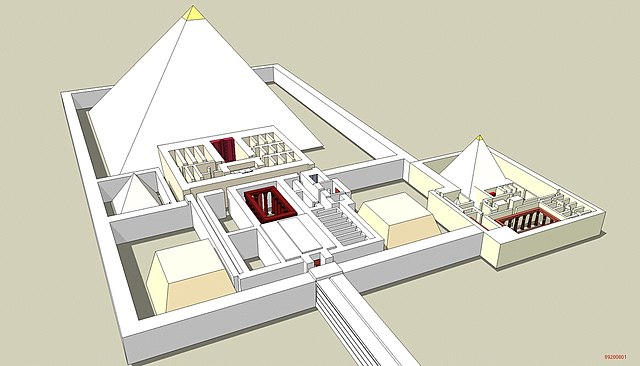The Temple of Kom Ombo is an unusual double temple in the town of Kom Ombo in Aswan Governorate, Upper Egypt. It was constructed during the Ptolemaic dynasty, 180–47 BC. Some additions to it were later made during the Roman period.
The double entrance to Kom Ombo Temple
Kom Ombo Temple
The calendar shows the figures for the days of the month (roll over the picture) and the hieroglyphs for the inundation season, Akhet. On the thirtieth of the Season of the Harvest, one can see the hieroglyph for the Season of the Emergence, which indicates the end of the harvest season. The next day is Akhet.
Kom Ombo Temple before reconstruction
Egyptian temples were built for the official worship of the gods and in commemoration of the pharaohs in ancient Egypt and regions under Egyptian control. Temples were seen as houses for the gods or kings to whom they were dedicated. Within them, the Egyptians performed a variety of rituals, the central functions of Egyptian religion: giving offerings to the gods, reenacting their mythological interactions through festivals, and warding off the forces of chaos. These rituals were seen as necessary for the gods to continue to uphold maat, the divine order of the universe. Housing and caring for the gods were the obligations of pharaohs, who therefore dedicated prodigious resources to temple construction and maintenance. Out of necessity, pharaohs delegated most of their ritual duties to a host of priests, but most of the populace was excluded from direct participation in ceremonies and forbidden to enter a temple's most sacred areas. Nevertheless, a temple was an important religious site for all classes of Egyptians, who went there to pray, give offerings, and seek oracular guidance from the god dwelling within.

The Temple of Isis at Philae, with pylons and an enclosed court on the left and the inner building at right. Fourth to first century BC
Low relief of Seti I performing rituals for the god Amun, from Seti's mortuary temple at Abydos. Thirteenth century BC
Sunk relief of personified provinces of Egypt bearing offerings for the temple god, from the mortuary temple of Ramesses II at Abydos. Thirteenth century BC
Reconstruction of the Old Kingdom pyramid temple of Djedkare Isesi, with causeway leading out to the valley temple. Twenty-fourth century BC.








